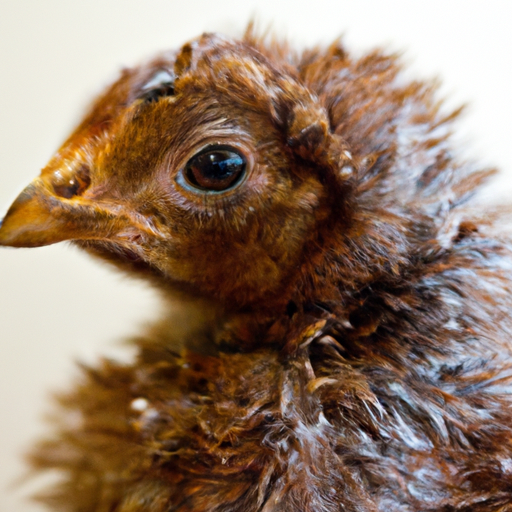
Have you ever wondered how stress can affect the development of pullets? In this article, we will explore the various ways in which stress can impact the growth and overall well-being of these young domestic chickens. From the physiological effects to the social implications, understanding the impact of stress on pullet development is vital for ensuring their optimal health and productivity. So, let’s take a closer look at how stress can shape the growth of these feathered companions and what measures can be taken to mitigate its potentially harmful effects.
Factors that Cause Stress in Pullets
Environmental Factors
Environmental factors play a significant role in causing stress in pullets. These include factors such as temperature extremes, inadequate ventilation, poor lighting conditions, and overcrowding. When pullets are exposed to extreme temperatures, it can disrupt their physiological processes and lead to increased stress levels. Similarly, poor ventilation and lighting conditions can create an uncomfortable environment, further exacerbating stress. overcrowding can lead to heightened competition for resources and increased aggression among birds, adding to their stress levels.
Social Factors
Social factors also contribute to the stress experienced by pullets. The introduction of new birds to an existing group or the formation of a new social hierarchy can be stressful for these young birds. The establishment of dominance within the group often involves aggressive interactions, leading to heightened stress levels. Additionally, social isolation or lack of proper socialization can also induce stress in pullets, as they are highly social animals and thrive in an environment with healthy social interactions.
Physical Factors
Physical factors, such as nutrition and disease, can have a direct impact on the stress levels of pullets. Inadequate or imbalanced nutrition can lead to deficiencies or excesses of essential nutrients, compromising the overall health of the birds. As a result, their stress response may be heightened, making them more vulnerable to the negative effects of stress. Additionally, the presence of diseases or infections can cause physical discomfort and pain in pullets, triggering stress responses that can negatively impact their well-being.
Physical Impact of Stress on Pullets
Developmental Delays
Stress experienced by pullets during their early stages of development can contribute to developmental delays. The physiological changes and growth that should occur within specific timeframes may be disrupted, leading to delayed development. This can manifest as delayed maturity, slower growth rates, and delayed onset of reproductive behaviors.
Weakened Immune System
Stress has a profound impact on the immune system of pullets. Chronic or severe stress can suppress the immune system, making the birds more susceptible to infections and diseases. The weakened immune system reduces the ability of pullets to fight off pathogens, leading to an increased risk of illness and mortality.
Reduced Growth Rate
Stress can also negatively affect the growth rate of pullets. When pullets are exposed to stressors, their growth and development can be stunted, resulting in smaller body sizes and lower weight gain. This can have detrimental effects on their overall health and productivity.
Decreased Egg Production
Stressors experienced by pullets can disrupt their reproductive processes, leading to decreased egg production. High levels of stress can interfere with the normal functioning of the reproductive system, impacting the timing and quality of egg production. This can ultimately lead to reduced egg yields and economic losses for poultry farmers.
Behavioral Impact of Stress on Pullets
Feather Pecking
Stress can contribute to the development of feather pecking behavior in pullets. Feather pecking involves birds plucking or damaging the feathers of their flockmates, leading to injuries and social disruption. Feather pecking is often a manifestation of stress and can have severe consequences for the welfare and health of the birds involved.
Aggression
Stressors in the environment can increase aggression among pullets. Factors such as overcrowding and competition for resources can trigger aggressive behaviors, such as pecking, chasing, and fighting. Such aggression can lead to injuries, stress-related disorders, and social hierarchies within the flock.
Reduced Social Interactions
Stress can also have an impact on the social interactions of pullets. When experiencing stress, pullets may withdraw from social interactions or exhibit avoidance behaviors. This can disrupt normal flock dynamics and can lead to reduced social cohesion and increased social stress within the group.
Altered Feeding Patterns
Stress can disrupt the feeding patterns of pullets, leading to irregular or decreased food intake. This can negatively impact their overall nutrition and health, further exacerbating the effects of stress. Stress-induced changes in feeding patterns can also result in weight loss and reduced growth rates.
Hormonal Impact of Stress on Pullets
Altered Reproductive Hormones
Stress can disrupt the normal regulation of reproductive hormones in pullets. Chronic or severe stress can lead to hormonal imbalances, affecting the timing and quality of egg production. Changes in reproductive hormone levels can have long-term effects on the reproductive health and productivity of pullets.
Decreased Corticosterone Levels
Stress leads to the release of corticosterone, a stress hormone, in pullets. Prolonged exposure to stress can result in decreased corticosterone levels, which may signify an inability to mount an effective stress response. This can further compromise the birds’ ability to cope with subsequent stressors and can have detrimental effects on their overall well-being.
Impaired Gonadal Development
Stress can interfere with the normal development and functioning of the gonads in pullets. Stressors experienced during the critical period of gonadal development can disrupt the maturation of reproductive organs, leading to impaired fertility and reproductive performance. This can have significant implications for the long-term viability and productivity of pullet populations.
Impact on Mortality and Disease
Increased Mortality Rate
Stress can significantly increase the mortality rate among pullets. The physiological and behavioral changes induced by stress can weaken the birds’ immune system, making them more susceptible to infections and diseases. This increased vulnerability can lead to higher mortality rates, resulting in economic losses for poultry farmers.
Greater Susceptibility to Infections
Stress compromises the immune system of pullets, making them more susceptible to infections. When exposed to stressors, the birds’ ability to fight off pathogens is reduced, leaving them vulnerable to various bacterial, viral, and parasitic infections. This can lead to outbreaks of diseases within the flock, resulting in higher morbidity rates and economic losses.
Higher Incidence of Diseases
Stress can contribute to a higher incidence of diseases in pullets. The physiological and behavioral changes caused by stress weaken the birds’ defenses against pathogens, increasing the likelihood of disease transmission and outbreaks. Stress-related diseases can have significant impacts on the health, welfare, and productivity of pullets.
Management Strategies to Reduce Stress
Optimal Housing Conditions
Providing pullets with optimal housing conditions is essential to minimize stress levels. This includes ensuring suitable temperature, ventilation, and lighting conditions. Well-designed housing facilities that accommodate the birds’ needs for space, perches, and nesting areas can create a comfortable environment that promotes their well-being and reduces stress.
Proper Socialization
Proper socialization is crucial to reducing stress in pullets. Early socialization allows birds to establish positive social bonds and hierarchies, reducing aggression and stress-related behaviors. Introducing new birds gradually and providing opportunities for social interactions can help foster a harmonious social environment within the flock.
Nutritional Management
Proper nutrition is essential for minimizing stress in pullets. Providing a balanced diet, with appropriate levels of essential nutrients, supports their physical and physiological well-being. Ensuring access to clean water, high-quality feed, and appropriate feeding schedules minimizes nutritional stress and promotes optimal growth, development, and overall health.
Routine Health Monitoring
Regular health monitoring is vital to detect and address potential stressors promptly. Implementing routine health checks and disease surveillance programs can help identify early signs of illness or stress-related issues. This allows for timely intervention and appropriate management strategies to minimize stress and prevent the spread of diseases within the pullet population.
Importance of Early Stress Mitigation
Long-Term Effects on Welfare
Early stress mitigation is crucial for ensuring the long-term welfare of pullets. The negative effects of stress experienced during the critical stages of development can have lasting impacts on the birds’ physical and behavioral health. By minimizing early stressors, the welfare and quality of life of pullets can be improved, enhancing their overall well-being.
Economic Consequences
The economic consequences of stress in pullets are significant. Stressed pullets are more prone to reduced growth rates, decreased egg production, and increased mortality rates. These factors can lead to financial losses for poultry farmers due to decreased productivity and increased expenses associated with disease management and mortality reduction.
Sustainability of Pullet Production
By mitigating stress in pullets, the sustainability of pullet production can be improved. Stressed birds are more vulnerable to diseases and have reduced productivity, negatively impacting the overall efficiency and sustainability of the industry. By prioritizing stress reduction strategies, pullet producers can contribute to the long-term viability and success of the poultry industry.
Research Advances and Future Perspectives
Effects of Different Stressors on Pullets
Ongoing research focuses on understanding the specific effects of different stressors on pullets. Investigating the impact of various environmental, social, and physical stressors can provide valuable insights into their individual and cumulative effects on the well-being and productivity of pullets. This knowledge can further guide the development of targeted stress reduction strategies.
Molecular Mechanisms underlying Stress Response
Advancements in molecular biology and genetics have enabled researchers to delve deeper into the molecular mechanisms underlying the stress response in pullets. By studying the genetic and epigenetic factors involved in the stress response, scientists aim to identify potential biomarkers and genetic markers related to stress resilience. This knowledge can pave the way for selective breeding and genetic interventions to develop stress-resilient pullets.
Development of Stress-Resilient Pullets
Efforts are being made to develop stress-resilient pullets through selective breeding and management strategies. By identifying birds with lower stress responses and successful coping mechanisms, these practices aim to enhance resistance to stressors and improve the overall well-being and productivity of pullets. Future advancements in this area hold promise for reducing the impact of stress on pullet populations.
In conclusion, stress can have a profound impact on the development and well-being of pullets. Environmental, social, and physical factors contribute to stress levels, leading to various physiological, behavioral, and hormonal changes. The consequences of stress include developmental delays, weakened immune systems, reduced growth rates, and decreased egg production. Stress also results in behavioral changes such as feather pecking, aggression, reduced social interactions, and altered feeding patterns. The hormonal impact of stress affects reproductive hormones, corticosterone levels, and gonadal development. Stress increases mortality rates, susceptibility to infections, and the incidence of diseases. To reduce stress, optimal housing conditions, proper socialization, nutritional management, and routine health monitoring are essential. Early stress mitigation is crucial for long-term welfare, economic sustainability, and the development of stress-resilient pullets. Ongoing research continues to explore the effects of different stressors, understand the molecular mechanisms underlying the stress response, and develop stress-resilient pullets for the future. By prioritizing stress reduction strategies, the poultry industry can contribute to the well-being and productivity of pullets and overall industry sustainability.







